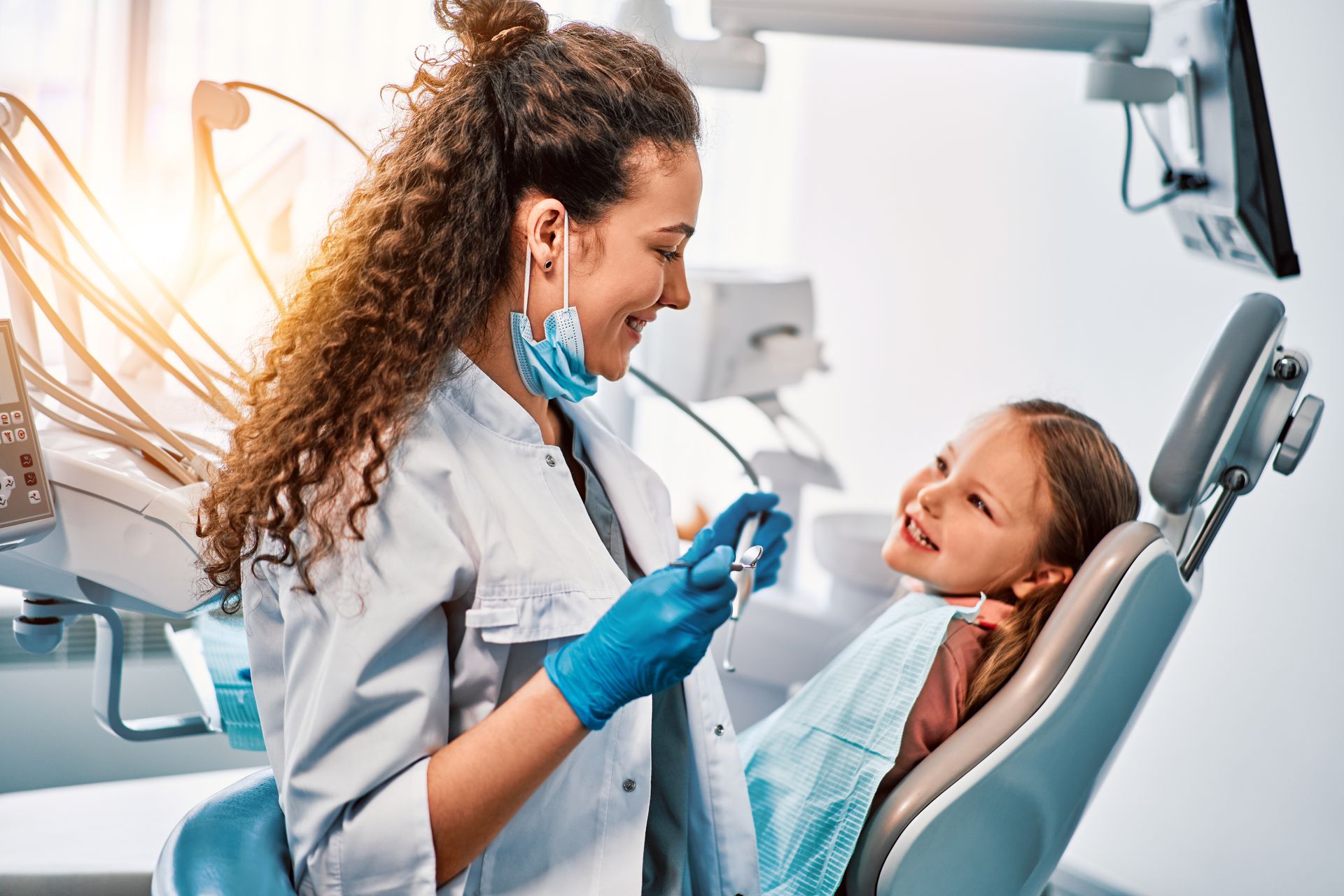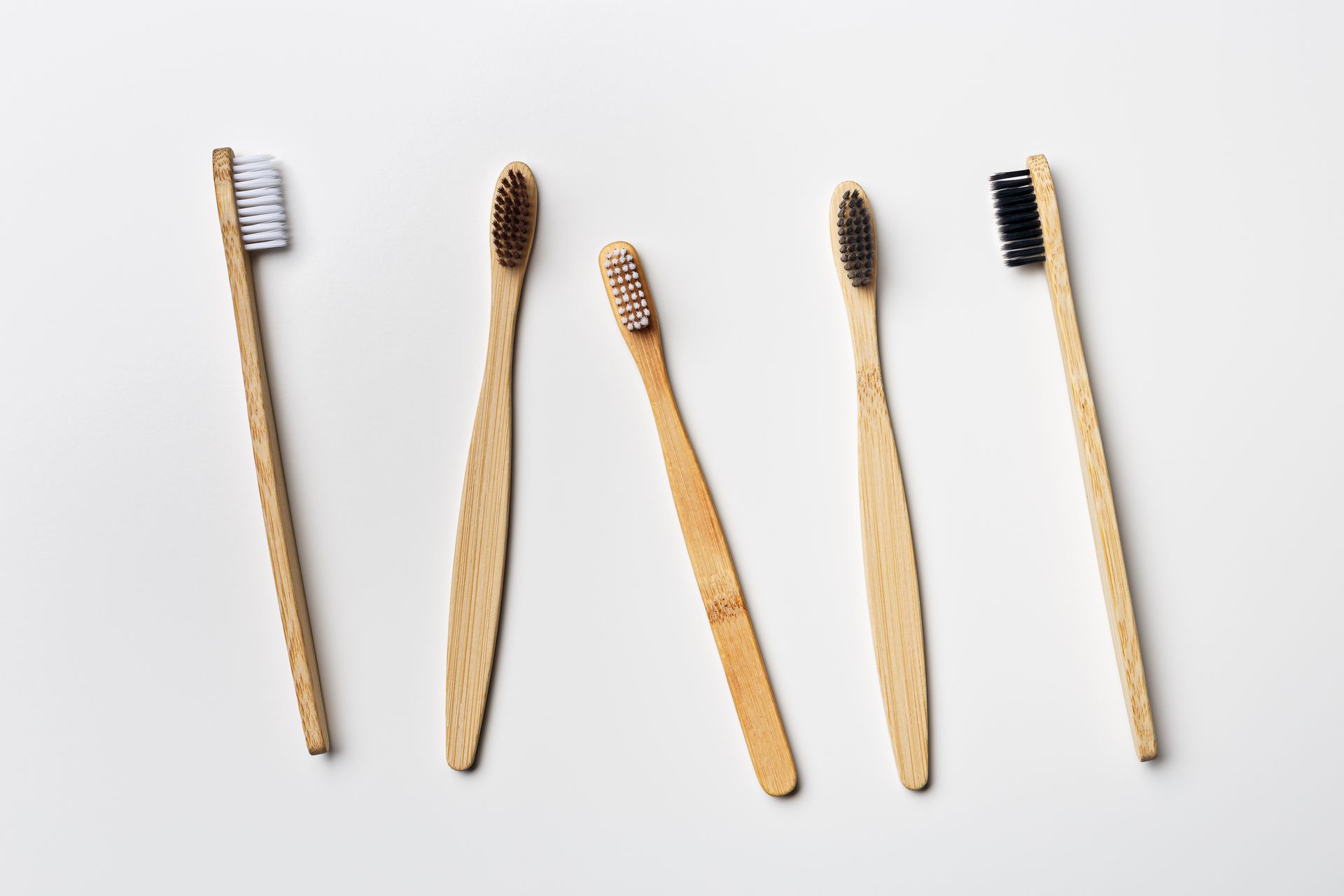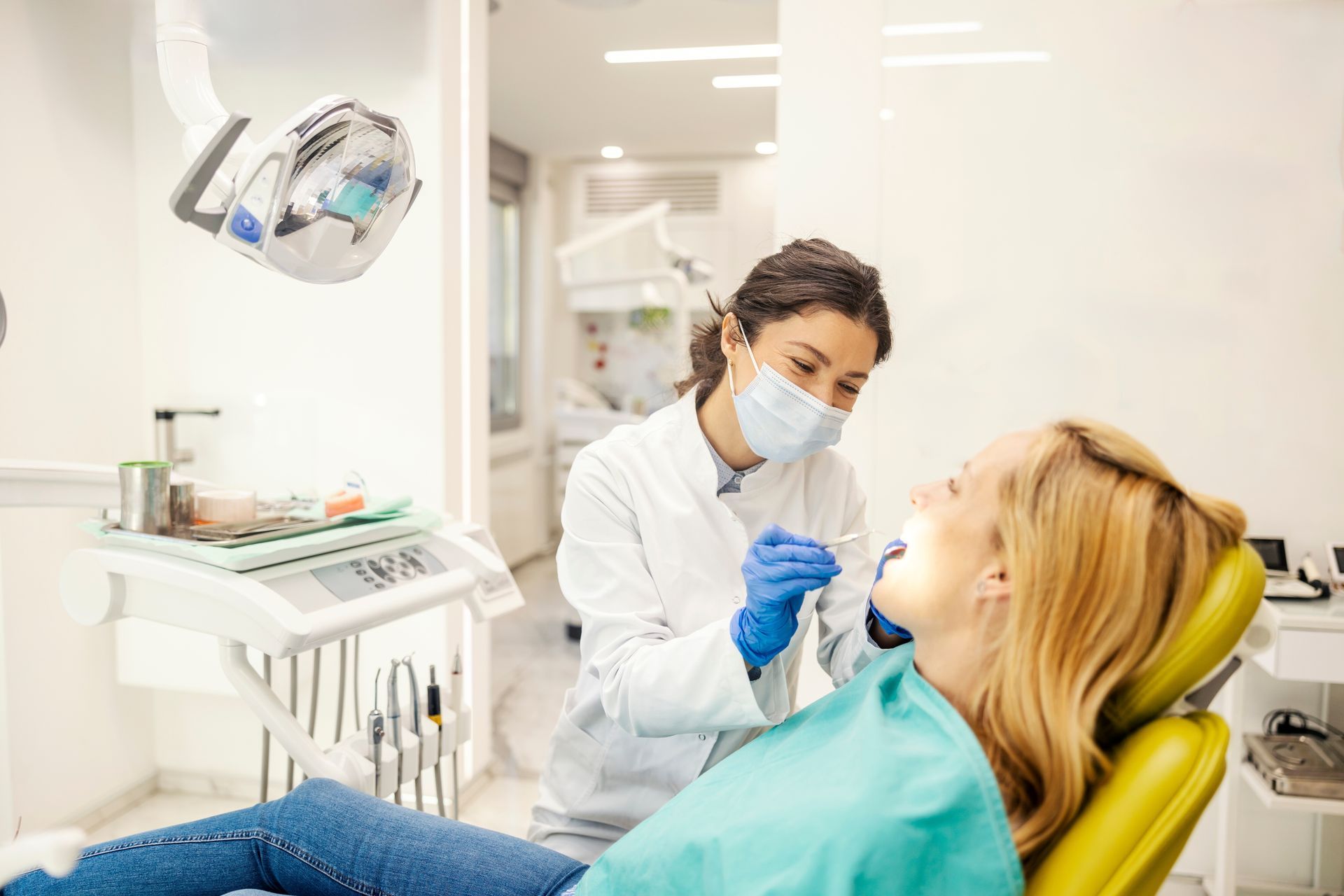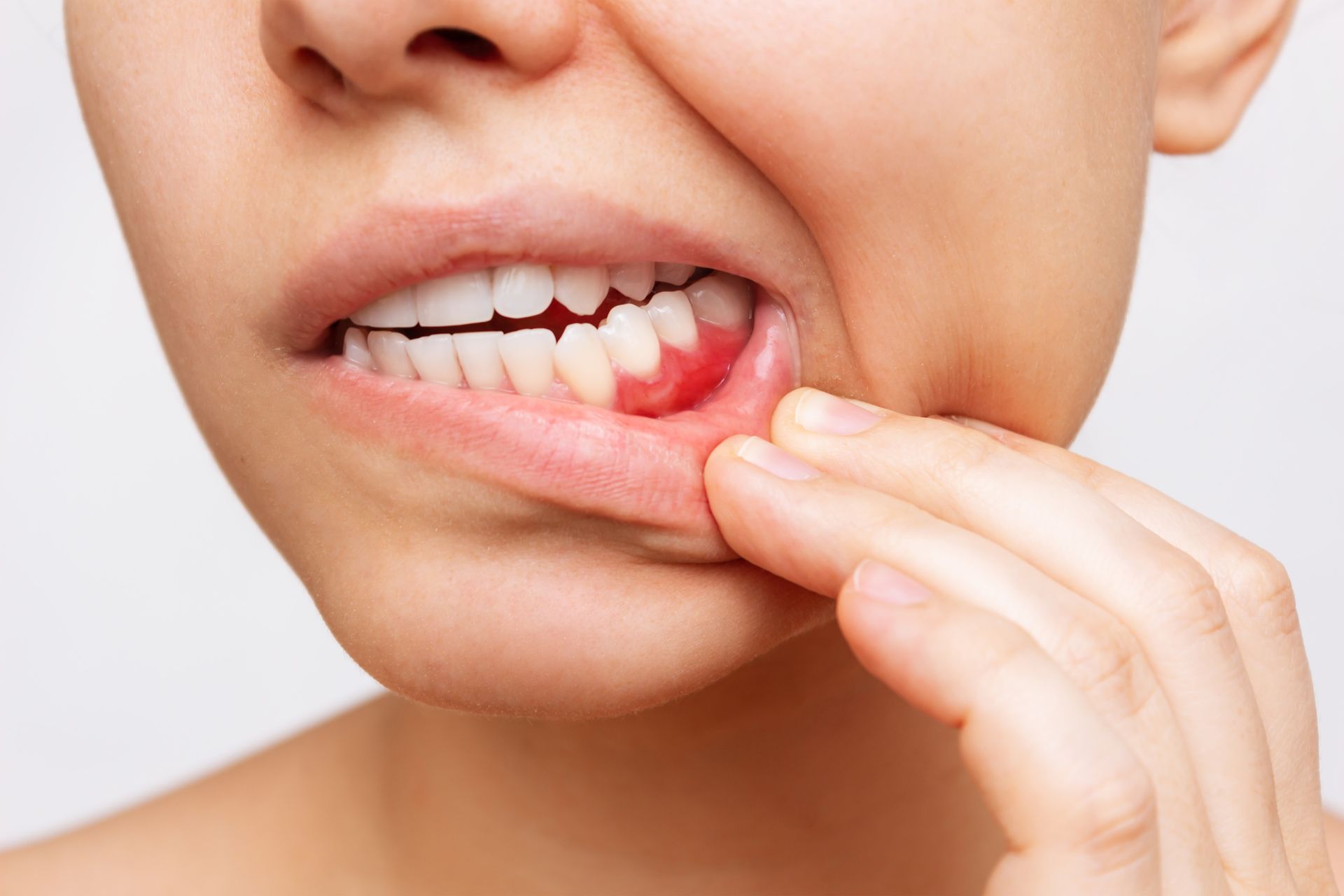Explore our Annapolis Dental Blog

Nobody loves the idea of having a tooth pulled—but sometimes, it’s the most responsible decision you can make for your overall health. The thought of a tooth extraction can sound intimidating. Maybe it brings up images of old-timey dental tools or pain-filled recovery days. But in truth, modern extractions are straightforward, safe, and often the key to stopping discomfort, infection, or further damage before it spirals into something worse. So let’s set the record straight. Whether it’s a severely decayed molar, a problematic wisdom tooth, or an overcrowding issue, extractions aren’t about giving up on a tooth—they’re about protecting your smile’s future. What Is a Tooth Extraction? A tooth extraction is exactly what it sounds like: the removal of a tooth from its socket in the jawbone. It’s one of the most common procedures performed in dental offices, and despite its reputation, it’s typically quick and minimally invasive. There are two main types: Simple Extractions – Performed on visible teeth using forceps and local anesthesia. Surgical Extractions – Required when a tooth is broken, impacted (like wisdom teeth), or hasn’t fully erupted. This involves making a small incision in the gum to remove the tooth. Your dentist or oral surgeon will determine which approach fits your situation based on x-rays and an exam. When Is Tooth Extraction Necessary? It’s not the first resort, but sometimes, it’s the best one. A dentist will always try to save a tooth when possible—using fillings, crowns, or root canals—but some situations make extraction the healthiest choice. Here are the most common reasons: Severe Tooth Decay : When a cavity has destroyed too much of the tooth structure or caused an untreatable infection. Advanced Gum Disease : Periodontal disease can weaken the bone supporting a tooth, making it loose or unstable. Impacted Wisdom Teeth : These often erupt at an awkward angle or fail to emerge fully, increasing the risk of pain, infection, or shifting nearby teeth. Overcrowding Before Orthodontics : Sometimes, teeth need to be removed to make room for proper alignment with braces or Invisalign. Fractured Teeth Below the Gumline : If a tooth is broken beyond repair, removal might be the only safe option. The Extraction Process: What to Expect Let’s demystify it. Most extractions take 20–40 minutes, depending on the complexity. You’ll typically receive: A local anesthetic to numb the area Sedation, if needed, to help with anxiety or comfort Gentle loosening and removal of the tooth Gauze to manage bleeding and help a blood clot form For surgical extractions, dissolvable stitches may be used. Afterward, you’ll rest briefly before heading home with detailed care instructions. And no, you won’t feel pain during the procedure—just some pressure. The anesthetic takes care of the rest. What About After the Extraction? Post-extraction care is all about protecting the healing site and avoiding complications like dry socket. Some key dos and don’ts: Do rest the day of your procedure Don’t use straws or smoke for at least 48–72 hours Do apply ice packs for swelling and take pain relievers as directed Don’t brush directly over the extraction site for the first day Do stick with soft foods for a few days (think soups, smoothies, yogurt) Most patients feel back to normal within a few days, with full healing taking place over one to two weeks. What If I Need to Replace the Tooth? Good question. If the extracted tooth was permanent and visible, your dentist will likely recommend a restoration to maintain chewing function and prevent surrounding teeth from shifting. Options may include: Dental Implants – A titanium post placed into the jaw to support a crown Bridges – Artificial teeth anchored by crowns on adjacent teeth Partial Dentures – Removable appliances that fill the gap Restoring your smile ensures your bite stays balanced and your oral health stays intact. Why Extractions Are Sometimes the Healthiest Choice Tooth extraction might feel like a last resort—but in many cases, it’s a proactive one. According to the American Dental Association and Mayo Clinic: Untreated dental infections can spread to the jaw, sinuses, or bloodstream Impacted wisdom teeth can damage adjacent molars or lead to cysts Extractions often relieve intense pain, swelling, and pressure Removing severely damaged or diseased teeth can protect the rest of your smile In short: while keeping natural teeth is ideal, removing a problem tooth can stop pain, preserve your health, and make room for something better. Busting Some Common Myths “It’ll be extremely painful.” Modern dentistry uses effective anesthetics and sedation options to make extractions virtually painless. “I’ll be out of commission for a week.” Most people return to normal activity within 24–72 hours. Full healing takes longer, but downtime is minimal with good care. “Losing a tooth means I’ll have a visible gap forever.” Not true. There are many affordable, aesthetic options to replace missing teeth, often available the same day or within a few weeks. Real Benefits of Tooth Extraction Backed by clinical recommendations from the American Association of Oral and Maxillofacial Surgeons and ADA: Prevents the spread of infection from severely decayed teeth Relieves pain caused by pressure, inflammation, or crowding Prepares the mouth for orthodontic or restorative treatment Improves long-term oral health by eliminating unstable or damaged teeth And when paired with modern replacement options, your smile can be restored quickly and beautifully. If you’re dealing with persistent pain or a problem tooth, don’t wait. Call Aria Dental of Annapolis at 410-280-5370 to book a consultation and find out if tooth extraction is the right next step for your health and comfort.

If your teeth could talk, they’d probably beg for a little extra backup—especially those hard-to-clean molars in the back. Enter: dental sealants. They might not be as flashy as veneers or as dramatic as root canals, but dental sealants are one of the most effective (and underrated) tools in modern dentistry for preventing cavities before they ever get started. Especially for kids and teens—but increasingly for adults, too—sealants can be a game changer for long-term dental health. Let’s take a closer look at how they work, who needs them, and why adding this quick treatment to your next appointment might just be the smartest dental decision you make this year. What Exactly Are Dental Sealants? Imagine putting a clear, invisible raincoat over your tooth. That’s the basic idea behind dental sealants. Dental sealants are thin, protective coatings made of plastic or resin that are painted onto the chewing surfaces of the back teeth—usually the premolars and molars. These areas are full of grooves and pits that trap food and bacteria, making them a hotspot for cavities. Brushing helps, but those deep crevices can be hard to reach, especially for kids. Sealants fill in those grooves, creating a smooth surface that: Blocks food and plaque from settling in Makes brushing more effective Lowers the risk of tooth decay dramatically And the best part? The application is fast, painless, and completely noninvasive. Who Should Get Dental Sealants? Sealants are most commonly recommended for children and teens. The American Dental Association (ADA) suggests applying them as soon as the first permanent molars come in—typically around age 6—and again when the second molars appear around age 12. But here’s something many people don’t realize: adults can benefit too. If you’re prone to cavities, have deep grooves in your molars, or just want extra protection, sealants are a simple, affordable option. They can even be applied to teeth that already have early signs of decay to stop it from getting worse. Sealants are especially helpful for: Children still developing strong brushing habits Teens who snack often or have orthodontic appliances Adults with a history of cavities or dental restorations Anyone with naturally deep grooves in their molars How Long Do They Last? While sealants aren’t permanent, they’re impressively durable. With good oral hygiene, they can last anywhere from 5 to 10 years. Dentists usually check them during regular visits and can reapply as needed. It’s a small price for long-term protection. Think of them like armor for your enamel—silent, strong, and always on duty. The Process: Quick, Simple, No Drills Worried about pain or discomfort? You can put that fear to rest. Applying dental sealants takes just a few minutes per tooth, and there’s no need for numbing, drilling, or downtime. Here’s how it goes: The tooth is cleaned thoroughly A mild etching solution is applied to roughen the surface for better bonding The tooth is rinsed and dried The sealant is painted on and hardened with a special curing light And that’s it. You can eat and drink right after your appointment. Backed by Science: Why Sealants Work Dental sealants aren’t just a nice idea—they’re backed by solid research. According to the Centers for Disease Control and Prevention (CDC), sealants prevent 80% of cavities in the back teeth, where 9 out of 10 cavities in children occur. The CDC also reports that kids without sealants are nearly three times more likely to have cavities than those with sealants. Other highlights from the American Academy of Pediatric Dentistry (AAPD) and ADA: Sealants are proven to reduce the incidence of cavities in children and teens They’re cost-effective, especially when compared to the cost of fillings, crowns, or root canals Sealants applied over early decay can stop further damage by sealing off bacteria from their food source In short, they work—and they work well. Addressing Common Myths and Concerns “Aren’t sealants just for kids?” Nope! While children benefit the most, adults can absolutely get sealants too—especially if they have a high risk of decay or a history of dental work. “Do sealants contain BPA?” The amount of BPA in dental sealants is extremely low—lower than what you’d get from handling a receipt or touching a plastic water bottle. They’re considered safe by both the ADA and FDA. “Will I feel them on my teeth?” Sealants are very thin. You might notice them at first, but most people forget they’re even there within a day or two. Why Prevention Pays Off Let’s face it—dental care can get expensive, especially when cavities lead to fillings, crowns, or root canals. Sealants offer one of the best returns on investment in dentistry. Think about this: A cavity can cost hundreds to treat A sealant costs a fraction of that And the process takes minutes—not hours in the chair Prevention saves time, money, and stress. It’s like locking your doors at night—not because something will happen, but because it’s the smart thing to do. Real Benefits of Dental Sealants Clinical organizations like the CDC and ADA agree: sealants make a real difference. Up to 80% reduction in cavities on molars for children and teens Effective for up to 10 years with proper care Painless application with no drilling or numbing Safe for kids and adults alike In a world full of high-tech solutions, sealants are refreshingly simple—and highly effective. Want to add extra protection to your smile? Ask about dental sealants during your next visit to Aria Dental of Annapolis. Call 410-280-5370 to schedule an appointment and give your teeth the defense they deserve.

When you’ve lost several or all of your teeth, life changes in ways you don’t always expect. Chewing becomes tricky, your favorite meals might be off the table, and smiling freely doesn’t feel so easy. If you’ve explored your options, you’ve probably heard of traditional removable dentures—but have you heard about fixed dentures? Fixed dentures are anchored securely in place using dental implants. They don't wiggle, don't click, and don’t come out at night. And for many people, they’re the closest thing to getting their natural teeth back. Let’s break down what fixed dentures are, how they work, and why they’re changing the game for tooth replacement. What Are Fixed Dentures? Fixed dentures—sometimes called implant-supported dentures, hybrid dentures, or permanent dentures—are a type of full-arch prosthetic that’s attached to dental implants surgically placed in your jawbone. Unlike removable dentures, fixed dentures stay in place 24/7 and are only removable by your dentist. They’re usually made of high-quality materials like acrylic, porcelain, or zirconia, and are designed to mimic the look and function of natural teeth. Once in place, they allow you to eat, speak, laugh, and smile without ever worrying about your teeth shifting or falling out. The Fixed Denture Process: What to Expect The process of getting fixed dentures takes careful planning, but the results are long-lasting and life-changing. Here’s how it typically works at a dental office like Aria Dental of Annapolis: 1. Initial Consultation & Imaging Your dentist will examine your mouth, take digital scans and X-rays, and assess your jawbone to determine if you’re a good candidate for implants. 2. Implant Placement Anywhere from 4 to 6 implants are surgically placed into your jawbone per arch. These small titanium posts serve as anchors for your new teeth. 3. Healing & Osseointegration Over the next few months, the implants bond with your natural bone—a process called osseointegration. During this time, you may wear a temporary denture. 4. Final Denture Placement Once your implants are secure, your custom fixed denture is attached. It's designed to match your natural gumline and facial structure, giving you a strong and beautiful new smile. The result? A permanent set of teeth that feels stable, looks natural, and gives you full function again. Who’s a Good Candidate for Fixed Dentures? Fixed dentures are ideal for adults who: Are missing most or all of their teeth Have enough healthy jawbone to support implants (or are candidates for bone grafting) Want a long-term or permanent alternative to removable dentures Are tired of denture adhesives, slipping, or nighttime removals If you’re in generally good health and want a smile that doesn’t require daily maintenance routines or removal, fixed dentures might be your best option. Why Choose Fixed Over Removable Dentures? We get this question a lot—why go through the implant process when removable dentures are faster and cheaper? The answer boils down to lifestyle, comfort, and long-term satisfaction. Here’s how fixed dentures stand out: No shifting or slipping – They stay in place through meals, conversations, and laughter. More natural function – Eat steak, bite into apples, and enjoy your favorite foods again. Preserve bone health – Implants stimulate your jawbone and prevent the bone loss that occurs with removable dentures. Longer-lasting results – With proper care, fixed dentures can last decades. Boosted confidence – No more worry about dentures clicking or falling out. According to the Journal of Oral Implantology, patients with fixed implant dentures report significantly higher satisfaction in chewing ability, speech, and self-esteem compared to those wearing removable dentures. The Benefits of Fixed Dentures, Backed by Research Fixed dentures aren’t just more convenient—they deliver real health benefits too. Professional studies and clinical reviews have shown that implant-supported restorations: Reduce bone loss – Implants act like natural tooth roots, preserving jawbone density over time. Improve nutrition – Better chewing ability means a more balanced diet and improved digestion. Enhance quality of life – People feel more confident in social settings and experience fewer limitations in daily activities. Reduce long-term dental costs – Fewer adjustments, repairs, and replacements are needed over time compared to removable dentures. The American Academy of Implant Dentistry states that more than 3 million people in the U.S. have dental implants—and that number grows by 500,000 each year. The shift toward fixed solutions is no accident—it’s based on effectiveness and patient satisfaction. Caring for Your Fixed Dentures While fixed dentures don’t come out, they do require care—just like natural teeth. Here are a few basics to keep them healthy and functioning for the long haul: Brush twice daily – Use a soft-bristled toothbrush to clean around your dentures and gums. Use special floss or interdental brushes – These help clean between implants and around the gumline. Visit your dentist regularly – Professional cleanings and exams help monitor your implants and ensure long-term success. Avoid extremely hard or sticky foods – While fixed dentures are durable, avoiding stress on the prosthetic helps it last longer. With just a little daily care, your fixed dentures can provide decades of dependable performance. Say Goodbye to Slipping Dentures—For Good If you’re tired of loose-fitting dentures or frustrated by the limitations of traditional tooth replacement, fixed dentures offer a long-term solution that delivers real freedom. They restore more than just your smile—they give you back your bite, your confidence, and your ability to enjoy life’s moments without hesitation. You deserve teeth that feel like your own again. Want to learn more about permanent tooth replacement options? Contact Aria Dental of Annapolis at 410-280-5370 to schedule your consultation and find out if fixed dentures are the right solution for you.

Here’s a question that sneaks up on many people during their dental visit: “Do you see any cavities?” Even if you brush twice a day and floss regularly, cavities can still form—and when they do, they don’t always hurt right away. That’s part of what makes them tricky. They creep in quietly, sometimes causing real damage before you even realize something’s wrong. But don’t worry—we’re not here to scare you. We’re here to explain cavities in plain language, help you understand why they form, and most importantly, show you how to prevent them from taking over your smile. What Is a Cavity, Really? Let’s clear this up from the start. A cavity isn’t some mysterious hole that appears overnight. It’s the result of a process called tooth decay—a breakdown of your enamel (the tough outer layer of your teeth) caused by bacteria and acids. Here’s how it works: Bacteria in your mouth feed on sugars and starches from your food. These bacteria produce acid as a byproduct. Over time, that acid wears down your enamel. As enamel weakens, small holes or “cavities” begin to form. If left untreated, a cavity can grow deeper, eventually reaching the softer dentin or even the nerve inside your tooth. At that point, you’re not just looking at a filling—you might need a crown or even a root canal. What Causes Cavities? Cavities don’t form out of nowhere. They’re the result of several combined factors—many of which are well within your control. Here are the biggest culprits: Sugary and acidic foods – Soda, candy, juice, and even dried fruits can feed cavity-causing bacteria. Poor oral hygiene – Skipping brushing or flossing allows plaque to build up. Dry mouth – Saliva helps wash away food particles and neutralize acid. Less saliva means more risk. Frequent snacking – Constant eating means your teeth are under attack all day long. Deep grooves or pits in teeth – These can trap food and bacteria, making them harder to clean. There’s also a genetic factor. Some people simply have softer enamel or more cavity-prone mouths, which makes prevention even more important. Signs You Might Have a Cavity Cavities can start silently, but as they progress, symptoms often show up. Here’s what to look for: A persistent toothache Sensitivity to hot, cold, or sweet foods Visible holes or dark spots on your teeth Pain when biting down Bad breath or a bad taste that lingers Still, many cavities show no symptoms until they’re already pretty advanced. That’s why regular checkups at Aria Dental of Annapolis are key. The Science-Backed Ways to Prevent Cavities Good news—cavities are largely preventable. Here’s how to put the odds in your favor and keep decay at bay: 1. Brush Twice a Day (With Fluoride) Use a fluoride toothpaste and brush for at least two minutes, morning and night. Fluoride helps strengthen enamel and reverse early decay. 2. Floss Every Day Yes, every day. Floss reaches between teeth where brushes can’t—and where most cavities start. 3. Limit Sugar and Acidic Foods Cut down on sugary snacks and sodas. When you do indulge, try to consume them with meals so saliva can help neutralize acids. 4. Drink Plenty of Water Water helps rinse away food particles and keeps your mouth hydrated. Fluoridated tap water offers even more protection. 5. Get Professional Cleanings Twice-yearly cleanings at Aria Dental of Annapolis remove plaque and tartar buildup, which brushing and flossing alone can’t handle. 6. Ask About Sealants Dental sealants—thin, protective coatings applied to back teeth—can dramatically reduce the risk of decay, especially in kids and teens. Benefits of Cavity Prevention That Go Beyond Your Smile The benefits of preventing cavities aren’t just about dodging dental work (though that’s a big perk). According to the American Dental Association and CDC, strong oral health is linked to overall health outcomes, including: Lower risk of heart disease and stroke Better diabetes management Reduced risk of infections spreading from the mouth Less time and money spent on emergency dental care Plus, keeping your teeth cavity-free simply feels better. No surprise aches. No sudden sensitivity. No time missed at work or school for fillings. Just a healthy, confident smile you can count on. Why Early Detection Is a Game-Changer Cavities don’t fix themselves, but when caught early, they’re easy to treat. A tiny filling is a quick, painless procedure that preserves your natural tooth structure and prevents bigger issues down the road. That’s why regular exams at Aria Dental of Annapolis matter so much. We use advanced tools to detect even the smallest signs of decay before they become major problems. And we’ll walk you through treatment options so you always feel informed and in control. Let’s Keep Cavities Off Your Plate You don’t have to wait until you’re in pain to do something about cavities. Prevention is far easier—and far more comfortable—than treatment. With a strong daily routine and regular visits to your dental team, cavities can stay off your radar entirely. Have questions about your risk for cavities or how to better protect your teeth? Contact Aria Dental of Annapolis at 410-280-5370 to schedule your appointment and get personalized tips to keep your smile cavity-free.

Here’s something most of us don’t think about until we have to: plaque doesn’t care how good your electric toothbrush is. Even if you brush like a champ and floss on schedule, there are spots your tools just can’t reach—and that’s where professional teeth cleanings make all the difference. Think of them like a dental pit stop. Sure, you might be keeping your car clean at home, but every so often, it needs a mechanic to check under the hood. Likewise, your smile needs that expert touch to stay truly healthy. Let’s take a closer look at why skipping a professional dental cleaning isn’t just risky—it could be costly, too. What Happens During a Professional Teeth Cleaning? If you’re picturing sharp tools and discomfort, we’re here to clear the air. Professional teeth cleanings are comfortable, precise, and surprisingly quick. The process is designed not only to clean your teeth but also to keep your gums, tongue, and overall oral health in check. Here’s a basic rundown of what you can expect during a cleaning at Aria Dental of Annapolis: Plaque and tartar removal – Your hygienist uses special tools to remove hardened tartar that builds up in areas brushing can’t reach. Gritty polishing – A gentle, mildly abrasive toothpaste buffs away surface stains and smooths enamel. Expert flossing – Not your average floss job—this gets in deep and clears out areas you might miss. Fluoride treatment (if needed) – Strengthens enamel and offers extra protection against decay. Oral health screening – Includes a check for gum disease, oral cancer, and other conditions that are easier to treat early. And just like that, your smile gets a deep refresh. Why Regular Cleanings Are So Important Most people think of professional teeth cleanings as cosmetic. And sure, there’s nothing like that smooth, squeaky-clean feeling afterward. But the real value goes way beyond how your teeth look—it’s about preventing serious issues. Here’s what regular cleanings actually help with: Prevents gum disease – Plaque buildup can lead to gingivitis and eventually periodontitis if left untreated. Reduces the risk of cavities – Especially in hard-to-reach areas like back molars. Protects your heart health – Studies have linked gum disease with heart disease and stroke. Catches problems early – From cracked fillings to oral cancer signs, early detection makes a big difference. Keeps your breath fresh – Bacteria and debris are major contributors to bad breath. Skipping cleanings doesn’t just affect your teeth—it can affect your whole body. How Often Should You Get a Professional Cleaning? The American Dental Association recommends getting a professional teeth cleaning every six months . That’s the gold standard for most people. However, some individuals may benefit from more frequent visits. You might need cleanings every 3–4 months if you: Have gum disease Smoke or use tobacco Are prone to tartar buildup Wear braces or clear aligners Have diabetes or other systemic health conditions At Aria Dental of Annapolis, your dentist will recommend a schedule that fits your unique needs—not a one-size-fits-all approach. The Real Benefits of Professional Teeth Cleanings The advantages of routine cleanings are backed by science and decades of dental research. Here’s what’s in it for you: Long-term cost savings – Preventative care costs far less than fillings, crowns, or implants. Better gum health – Cleanings remove plaque and tartar from the gumline, reducing inflammation. Stronger enamel – Fluoride treatments and regular check-ins help keep enamel tough and cavity-resistant. Whiter smile, naturally – Cleanings polish away many surface stains from coffee, wine, and everyday foods. Peace of mind – Knowing your smile’s in good shape does wonders for your confidence and mental well-being. According to the CDC, nearly half of adults over 30 have some form of gum disease—but many don’t even know it. Cleanings are your front line of defense. Let’s Talk Comfort—Because That Matters, Too For a lot of folks, dental anxiety is real. But a professional teeth cleaning doesn’t have to be uncomfortable or stressful. At Aria Dental of Annapolis, our team focuses on gentle, compassionate care. We walk you through every step, adjust based on your comfort level, and even offer amenities to help you relax. Worried about sensitivity? Let us know. Concerned about your gums? We’ll tailor your care plan. There’s no judgment here—just support and expert guidance. Book Your Cleaning Before Your Smile Needs Saving Skipping a cleaning might not seem like a big deal, but over time, the risks stack up. Plaque turns to tartar. Gums recede. Cavities creep in silently. Before you know it, you’re dealing with a dental emergency that could have been avoided with a 45-minute cleaning. Don’t wait for a problem to make itself known. Keep your smile strong, bright, and healthy by scheduling your professional teeth cleaning today. Want that just-cleaned sparkle and long-term protection for your smile? Contact Aria Dental of Annapolis at 410-280-5370 to book your next professional teeth cleaning and take the next step in your preventive care.

Ever bite into something cold or sweet and feel a sharp, lingering jolt in your tooth? It’s easy to dismiss it as nothing. But sometimes, that pain is your tooth’s way of waving a white flag—and it might be trying to tell you that something deeper is going on. Enter: root canal treatment. Despite its reputation, it’s not the monster under the dental bed. In fact, it’s often the hero that saves your tooth from being lost altogether. Let’s get past the myths and break down exactly what root canal treatment is, why it’s needed, and what it actually feels like. What Exactly Is a Root Canal? Think of your tooth like a hard shell with a soft center. That inner core—called the pulp—contains nerves, blood vessels, and connective tissue. When it gets infected or inflamed (usually due to decay, cracks, or trauma), things can get painful fast. A root canal treatment involves removing that damaged pulp, cleaning out the infected areas, and then sealing the tooth to keep bacteria out. The structure of your tooth stays intact, and with a crown on top, it works just like new. So no, it’s not about removing the root of your tooth—it’s about cleaning and protecting it. Common Signs You Might Need a Root Canal While only a dentist can confirm it with X-rays and exams, there are a few red flags that might indicate the need for root canal treatment: Throbbing tooth pain that doesn’t go away Sensitivity to hot or cold that lingers Swollen or tender gums near a specific tooth A darkened tooth (which may suggest internal damage) A pimple-like bump on your gum Some people don’t feel any pain at all—which makes regular dental checkups at Aria Dental of Annapolis even more important. What Happens During a Root Canal Procedure? Root canal treatment is usually completed in one or two visits. And no, it’s not painful. With modern numbing techniques, it often feels like getting a dental filling. Here’s a simplified version of what happens: Numbing the area – so you’re completely comfortable. Creating a small opening – to access the pulp chamber. Removing the damaged pulp – and cleaning the inside of the canals. Disinfecting the area – to remove bacteria and debris. Filling and sealing – the space with a biocompatible material. Placing a crown – to restore the tooth’s strength and appearance. Once it's done, most patients feel instant relief—and their natural tooth is safe from extraction. The Benefits of Root Canal Treatment According to the American Association of Endodontists, root canal therapy has a success rate of over 95% and can last a lifetime with proper care. Here’s why this treatment is a game changer: Preserves your natural tooth – no need for a bridge or implant. Stops infection from spreading – protecting your overall health. Relieves pain – often immediately after treatment. Restores full function – chew, smile, and speak without worry. Cost-effective – compared to tooth loss and replacement. Saving your natural tooth is almost always better than pulling it. With a root canal, you get a second chance at a strong, pain-free smile. Root Canal Recovery: What to Expect Most people are pleasantly surprised at how smooth the recovery is. You may experience minor soreness for a couple of days, but it’s usually manageable with over-the-counter pain relievers. Tips to speed up recovery: Avoid chewing on the treated tooth until your dentist places a crown Practice good oral hygiene—gentle brushing and flossing Stick to soft foods for a day or two Follow any specific aftercare instructions from your dental team If discomfort lingers or worsens, give your dentist a call. But in most cases, recovery is quick and uneventful. Don’t Fear the Root Canal—Embrace the Relief There’s no reason to live with dental pain or risk losing a tooth. Root canal treatment is safe, effective, and far less intimidating than it sounds. With a bit of care and the expertise of professionals like those at Aria Dental of Annapolis, your tooth can be saved—and your comfort restored. Ready to find relief and preserve your natural smile? Contact Aria Dental of Annapolis at 410-280-5370 to schedule your consultation and learn whether root canal treatment is right for you.





